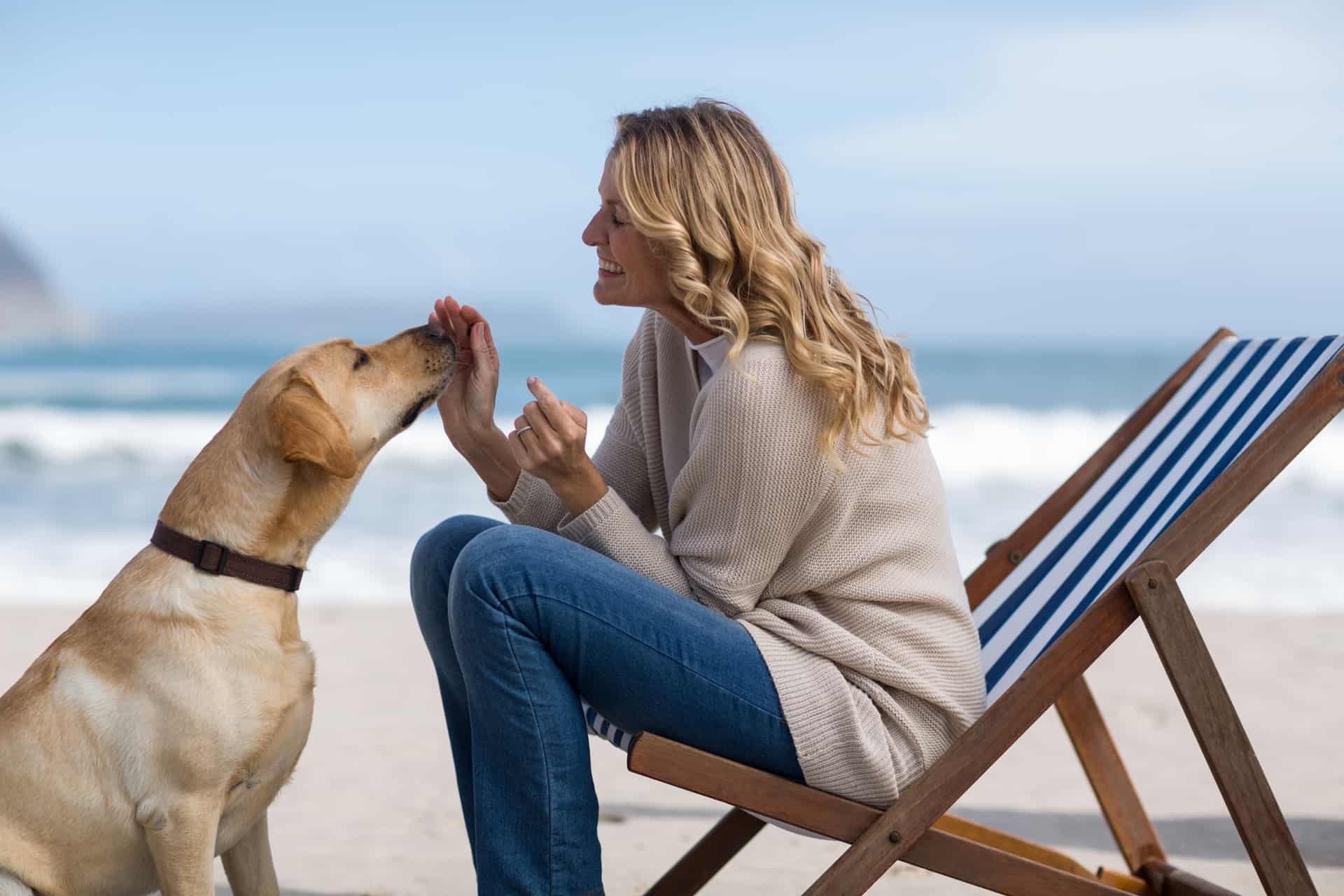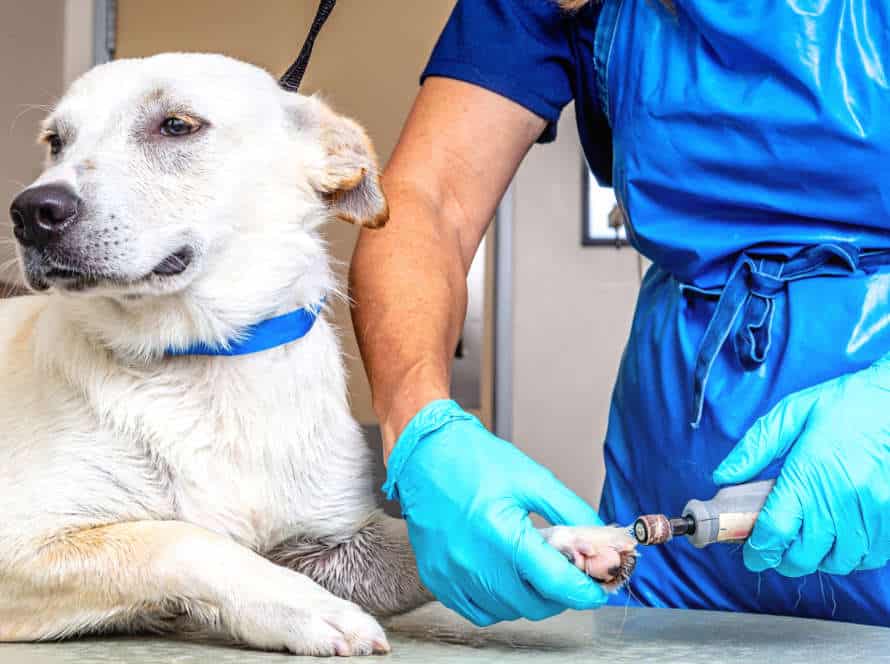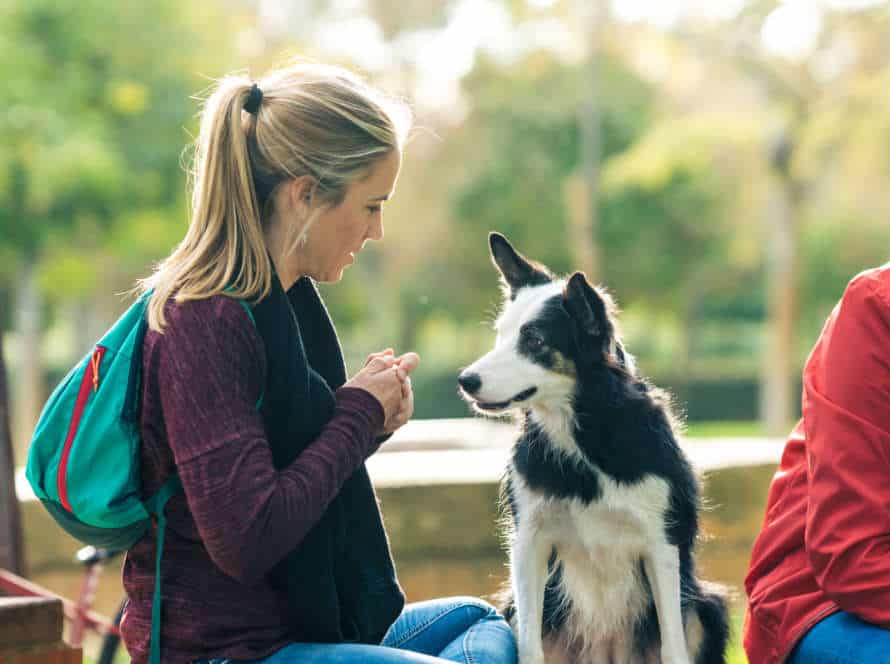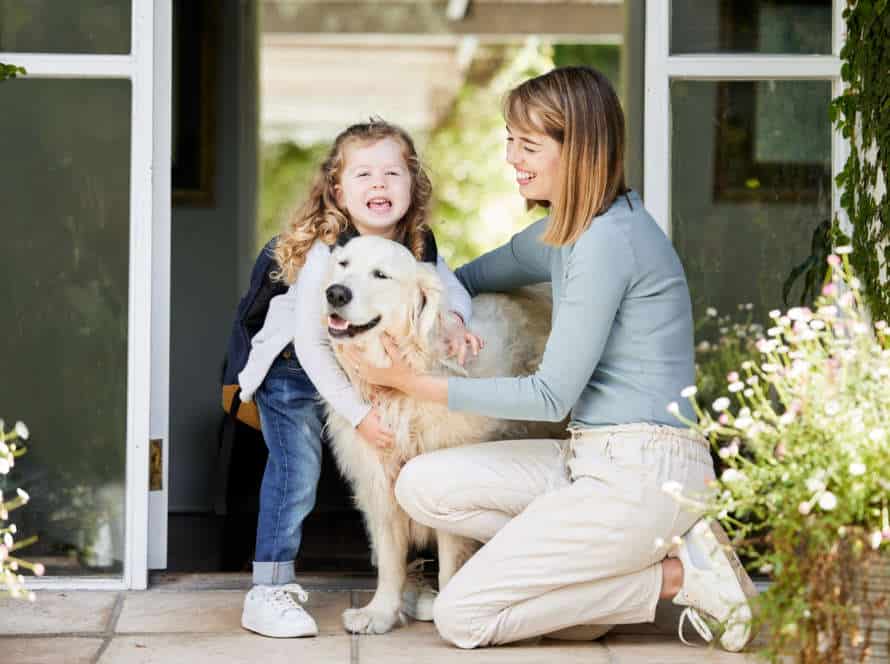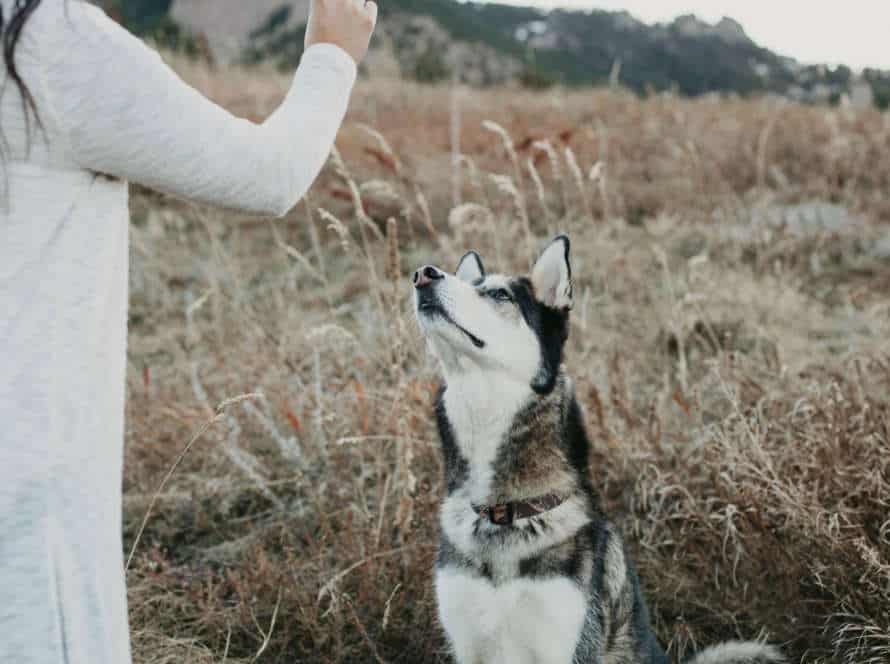The Best Trust Exercises for Every Stage of Your Dog’s Life
Trust exercises are essential to strengthen the bond between a dog and their owner and build a trusting relationship. Different stages of a dog’s life require different trust exercises.
Puppyhood: Offer treats for positive behavior and build confidence with obstacle courses.
Adolescence: Promote basic obedience and focus with recall training or command training.
Adulthood: Maintain the bond with activities like hiking, bike-joring, or fetch.
Seniorhood: Promote mobility and mental stimulation with massages, slow walks, and obedience tricks.
Remember, trust is an ongoing process that needs continuous work.
Trust Exercises for Puppies
Trust exercises are essential for doggie training and socialization. No matter the pup’s age.
Puppies are usually bursting with energy and inquisitiveness. So, it’s important to help them build trust in people and other canines.
In this section, we’ll talk about the best trust exercises for puppies that you can begin now.
Hand-feeding and Eye Contact Games
Hand-feeding and eye contact games are great trust exercises for puppies. They help build a strong bond with their owners, and encourage good behavior.
Hand-Feeding:
Instead of using a food bowl, feed your puppy by hand. This teaches them to associate you with positive reinforcement. It also helps to create obedience and teaches them to be gentle.
Eye-Contact Games:
Play “look at me” or “watch me” with your pup. Reward them with treats for maintaining eye contact with you. This is a great way to build trust and bond.
These trust exercises have variations for all stages of puppy-hood. You don’t need any equipment either.
Pro tip: Be patient when teaching your pup. It may take a while for them to get comfortable with the exercises. Don’t give up!
‘Stay’ or ‘Wait’ Command Training
‘Stay’ or ‘Wait’ is a must-have command for your puppy. Here’s how to train it:
- Start in a peaceful, quiet place with treats.
- Tell your pup to ‘Sit’. When it does, say the command firmly and clearly. Hold up your hand for a few seconds.
- Every few seconds, give a treat and say ‘good’.
- Gradually increase the time and distance of the ‘Sit’ command before giving ‘Stay’ or ‘Wait’.
- No training session should go over 10-15 minutes. End it on a good note.
This builds trust between you and your pup. Over time, it will obey the command. Pro Tip: Praise and reward it throughout.
Positive Reinforcement Training
Positive reinforcement training is one type of dog schooling that rewards good behavior, to encourage it. Trust exercises are vital for positive reinforcement training for puppies and dogs, as they aid in building trust and a strong bond between dog and owner.
For every stage of your dog’s life, here are the top trust exercises:
Puppyhood:
- Name recognition
- Hiding treats or toys
- Touch response
Adolescence:
- Commands
- Recall training
- Eye contact
Adulthood:
- Agility training
- Trick training
- Treadmill training
Always remember to use positive reinforcement with your pet, to evade any trust problems. Tip – Make sure the trust exercises you pick are suitable for your dog’s age, breed, and energy level.
Trust Exercises for Adolescents and Teenage Dogs
Trust exercises during a pup’s adolescent and teenage years are imperative. It may be hard for them to trust your commands or they may not have the endurance to obey. Fortunately, there are many trust exercises to help your pup learn to trust and obey faster. Let’s look at the best trust exercises for teen and adolescent canines!
‘Stay’ Command on a Leash, Without Leash, and in Different Locations
The ‘Stay‘ command is a must for adolescents and teenage dogs. It can be done with and without a leash in various places to strengthen obedience and trust between the pup and their owner.
When leashed, get them to ‘Sit‘ first. Hold the leash firmly, give the ‘Stay‘ command, and keep your eyes on your dog. Step away, and reward them with praise and a treat if they obey. Gradually increase the distance and duration of the ‘Stay‘.
To do this without a leash, set up a boundary with markers or cones. Say ‘Stay‘ and reward them with positive reinforcement and a treat if they obey. Gradually increase the distance and duration of the ‘Stay‘.
For practicing in different locations, start in a quiet, low-distraction area. Gradually increase the level of distraction and move to different spots, reinforcing the command and rewarding accordingly.
Patience is key. Consistency, positive reinforcement, and gradually increasing difficulty will build obedience and trust between you and your dog.
Play fetch while teaching ‘Come’ and ‘Drop’ commands
Playing fetch is a great way to teach your teenage or adolescent pup “come” and “drop” commands. It builds trust and reinforces obedience. Here’s how to do it:
- Start in a long hallway or open space.
- Show the dog the toy or ball you want them to fetch.
- Throw it a short distance.
- Call out “come” in a loud, clear voice.
- When they bring it back, ask them to “drop” it.
- Give a treat or praise for each correct command.
- Gradually increase the distance you throw the object.
Pro tip: Use positive reinforcement throughout to motivate and reward the pup. This will help them relate obedience with positive experiences.
Desensitization Exercises – Introduce your puppy to different sounds
Desensitization exercises are essential in a pup’s socialization process. They help to prevent sound-related fears & anxieties in the future. Here’s how to introduce your puppy to different sounds:
- Choose a sound that’s not too loud or overwhelming, like a doorbell or blender.
- Play it at a low volume while your pup eats, plays, or enjoys a treat.
- Increase the volume as your pup gets comfortable.
- Repeat this process multiple times, increasing the volume & duration of the sound.
- If your pup shows signs of fear or anxiety, stop & try later at a lower volume.
Over time, your pup will link these sounds to positive experiences & feel more relaxed in various environments.
Pro Tip: Start with mild sounds & gradually move to loud & jarring ones. If the pup shows discomfort, use earmuffs or noise-canceling headphones.
Trust Exercises for Adult Dogs
Trust is key in a doggy’s life. Adult pooches can improve their relationship with their owners through trust exercises. Exercises that work on obedience, focus, and self-control can be made based on the behaviours and experiences already had by the adult dog.
Let’s look into some effective trust activities for adult canines!
Obstacle Course Training – Introduce them with different types of obstacles
Introducing your pup to diverse obstacles is a must for obstacle course training. This builds trust and confidence in your furry mate. Here are some obstacles you can introduce:
- Agility Jumps: Jumping over a hurdle or bar. This enhances their jumping, balance, and coordination.
- Crawling Tunnels: Crawling through a tunnel. Improves agility and problem-solving.
- Teeter Totters: Striding across a seesaw-like board. Enhances balance, body awareness, and ability to handle movements and sounds.
- Weave Poles: Weaving in & out of poles. Enhances agility, speed, and focus.
- A-Frame: Climbing up & down a ramp-like structure. Strengthens confidence, balance & coordination.
Introducing these obstacles to your pup helps build trust & confidence, and also strengthens your bond.
‘Dock Diving’ to Develop Calmness in Dogs
Dock Diving is a great way to get your adult dog to be calm and trust you, through Trust Exercises. Here’s the plan:
- Start by teaching your pup to get in the water from a dock or platform.
- When they’re comfortable swimming and diving, begin adding Trust Exercises.
- Step up the distance between the dock and the water, so your dog learns to trust you’ll catch them when they take the plunge.
- As your canine becomes more confident, add distractions like toys or treats in the water, to show them they can still trust you even if something looks tempting!
With patience and time, your pup will learn to be trusting and relaxed, which will strengthen your bond.
Hide and Seek Game with Toys and Treats
Bonding with your pooch and increasing their trust in you? Play hide and seek!
Grab a toy they adore and some treats. Show them the toy, then place it close by. Ask them to sit and stay, then go hide the toy. Release them, and encourage them to find it. Whenever they do, reward them with a treat.
As they get more confident, hide the toy in harder places. This exercise is great for trust, problem-solving, and patience. Plus, it keeps them mentally active and engaged!
Trust Exercises for Senior Dogs
As pups age, it’s important to give them trust. Senior doggies will really benefit from trust activities. These activities help them feel secure and safe. They also help make relationships between the dog and its guardian better. In this article, we’ll find out the best trust exercises for older pooches.
Reward-based training using new sounds and exercises
Reward-based training with new sounds and exercises is a great way to build trust with senior dogs and keep their minds sharp. Here are some fun activities that can help:
- Sound socialization – Gently introduce your senior dog to new, unfamiliar sounds using reward-based techniques. This helps to avoid fear and anxiety in unpredictable situations.
- Mind games – Puzzle toys, scavenger hunts, and other mental exercises can keep your dog’s mind active.
- New tricks – Teach your senior dog new tricks! This builds trust and confidence and also provides an exciting challenge.
By engaging in these activities regularly, you can keep your senior dog active, build trust, and strengthen your bond together. Pro tip: Make sure the exercises are age-appropriate for your senior dog to avoid any injury or discomfort.
Slow and Steady Exercise Routines
Trust exercises for senior dogs are an essential part of life. Slow, steady exercises help build and maintain the bond between dog and owner. These activities are gentle and low-impact, designed to improve physical and emotional wellness.
Trust activities must be done in a safe and secure environment. Controlled leash walking is one such example. Here, the owner guides the dog’s movements with a short leash. This keeps the dog close and feeling secure.
The “stay” command reinforces obedience and respect for the owner’s authority. Also, daily grooming is vital to strengthen the bond and promote hygiene.
Pro tip: Building trust with senior dogs takes time, patience, and regular practice. It’s worth it though.
Cooling Orthopedic Bed for Comfort
Cooling orthopedic beds are great for both young and old dogs who suffer from joint pain or overheating. These beds help keep their body temperature regulated for a healthier sleep.
Features of cooling orthopedic beds include:
- Gel-infused memory foam to reduce pressure on joints and provide a comfortable sleep.
- Breathable mesh fabric covers for better airflow and to avoid overheating.
- Water-resistant and easy-to-clean covers to prevent accidents, spills, and odors.
- Non-slip bottom covers to keep the bed in place, especially for active dogs.
Pro Tip: Consider your pup’s size, weight, sleeping style, and medical conditions before buying a cooling Orthopedic Bed. Ask your vet for advice tailored to your dog.
Special Considerations and Safety Tips for Trust Exercises
Trust exercises are important. To keep your pup safe, know the techniques and safety measures. Start with activities like fetch and tug-of-war. Strengthen the bond with a recall. Guide your pup and help them trust through various activities.
Monitor your dog’s behavioral changes
Trust exercises between dogs and their owners can be fun and useful. It’s important to keep an eye on your pup’s behavior changes too. Here’s how:
- Observe their body language and behavior before, during, and after the exercise.
- Look for signs of anxiety, stress, or fear. Such as trembling, panting, pacing, whining, growling, or avoiding eye contact.
- If you spot any negative changes, stop the exercise straight away.
- Consult a dog trainer or behaviorist.
Trust exercises should be done gradually and in a safe, controlled environment with the right equipment and supervision. All dogs aren’t suited for all trust exercises. Some may need more time and training to build trust and confidence.
Use positive reinforcement techniques
Positive reinforcement is key for trust-building with your pup. Start out with easy activities like fetch or hide-and-seek. Reward them with yummy treats, tummy rubs, and kind words. Avoid negative feedback like scolding or punishment. This can show aggression and decrease their trust.
Once trust is built, move on to tougher exercises. Try agility courses or “fake vet visit” activities that simulate scenarios. Gradually increase difficulty and use positive reinforcement. Also, be aware of your dog’s physical limitations. This will help keep your pup safe.
Better to start with simple exercises before moving to complex ones.
Start with basic trust exercises for your dog. Eye contact and treats, hand feeding, and touching exercises build familiarity and safety. Complex exercises, like off-leash fetch or obstacle course training, require more advanced training. Don’t rush into these without a strong foundation.
Be mindful that every dog is different and responds to trust exercises differently. Go slowly, making sure both pet and owner are comfortable with each exercise before continuing.
Frequently Asked Questions
1. What are trust exercises for dogs?
Trust exercises for dogs are activities that help build trust between dogs and their owners. These exercises involve engaging your dog in various activities that help them feel safe, secure, and loved.
2. Why are trust exercises important for dogs?
Trust exercises are important for dogs for several reasons. Firstly, they help deepen the bond between dogs and their owners, which is crucial for a healthy, happy relationship. Additionally, trust exercises can help reduce anxiety and stress in dogs, making them more relaxed and comfortable in their environment.
3. What are some trust exercises for puppies?
For puppies, some good trust exercises include playing games like hide-and-seek, practicing basic obedience commands, and engaging in puzzle games that challenge their minds.
4. What are some trust exercises for adult dogs?
For adult dogs, trust exercises can include activities like walking together, practicing obedience commands with distractions, and playing fun games like fetch and tug-of-war.
5. Can trust exercises help dogs that have been abused or have trust issues?
Yes, trust exercises can be particularly helpful for dogs that have been abused or have trust issues. These exercises can help rebuild their confidence and sense of security, which can help them overcome their fears and anxieties.
6. How often should I do trust exercises with my dog?
This depends on your dog’s personality, age, and temperament. However, as a general rule, it’s a good idea to practice trust exercises with your dog at least once a week to keep your bond strong and their anxiety at bay.

